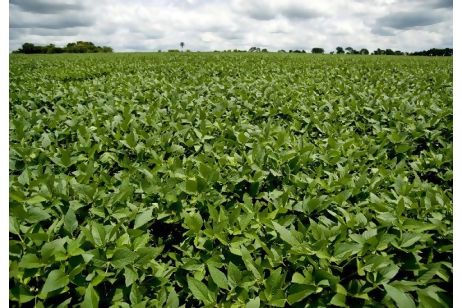As farmers in the midwest plant corn and get ready to plant soybeans, the top midwest Extension grain market economist for corn and soybeans, Dr. Darrel Good of the University of Illinois, is expecting a shift of up to a million corn acres away from the USDA Prospective Plantings Number of March 31st- with those acres adding to the eventual number of soybean acres planted in the US.
A lot of the reason has to do with price. Settlement prices on March 30th, the day before the release of the Prospective Plantings report, were $3.84 per bushel for the December 2016 corn futures contract on the Chicago Mercantile Exchange, and $9.23 per bushel for the November 2016 soybeans contract. On April 18th, the December corn contract settled at $3.90 per bushel, $.06 higher than on March 30th. The November 2016 soybeans contract settled at $9.67 per bushel on April 18th. Between March 30th and April 18th, soybean prices rose $.44 per bushel compared to $.06 per bushel for corn. As of this morning, April 21st, November Soybeans are standing at $10.15, another 48 cents up since the start of this week. Corn prices have also risen this week, with the December Corn futures contract currently at $4.05- up twenty five cents per bushel compared to the start of the week.
 Farmers told USDA in March they would plant about 82.2 million acres of soybeans this season. This is one percent less than last year, and a million acres or so less than the trade had really expected.
Farmers told USDA in March they would plant about 82.2 million acres of soybeans this season. This is one percent less than last year, and a million acres or so less than the trade had really expected.
Darrel Good and colleague Scott Irwin put together a supply and demand table for this year. They added 800,000 planted acres to soybeans, putting the figure at 83 million even.
The two project this could result in a 267 million bushel ending stocks number with an average cash price of $9.45 a bushel for the year. USDA season's average cash price for soybeans for the 2015 crop is $8.75. It's important to note that while the Illinois projection uses a larger planted acreage figure, it also includes a much lower average yield. Dr. Good says that he thinks USDA is a little too optimistic to begin with in their trendline yields- and then he further trims his expectations because of El Nino fading, increasing weather risks for this summer.
The prediction from Darrel Good is for soybeans to end up with a nationwide average yield of 44 bushels, off a little more than a bushel per acre compared to the earlier USDA predictions.
Click here to see more...